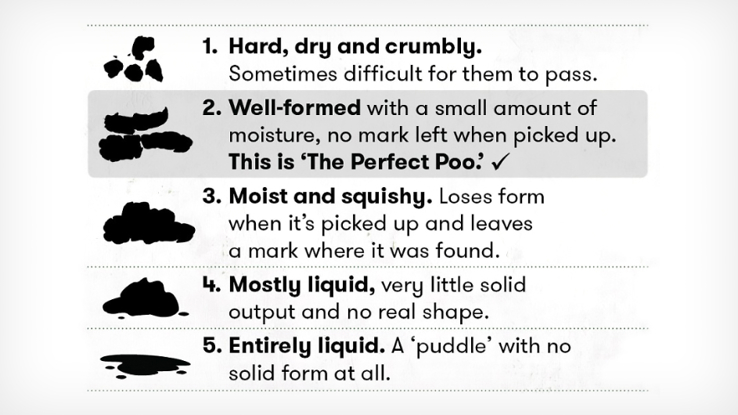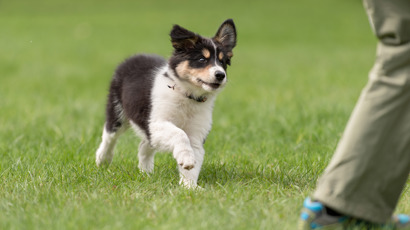The Perfect Poo

Can I tell if my dog is healthy from their back-end-performance?
One of the questions I frequently ask pet parents is what their dog’s poo looks like and whether it is ‘kickable’, aka how easy it is to pick up.
While it may not be the most 'glamourous' of conversation topics, the perfect poo should be firm but not too dry and while you’re picking it up, it should keep its shape and not leave any residue on the grass.
If the poo is not ‘kickable’, then the first question I ask is what type of diet the owner is feeding. More often than not, if their dog is being fed a cheap, low quality brand of food or a variety of human table scraps, their dog is more likely to produce sloppy faeces. Some of this sloppy poo is then left behind on the pavement or on the grass.
Diarrhoea in dogs is a common health complaint, that can be caused by things such as:
- Gut infections and parasites
- Eating something they shouldn’t have (something out of the bin, for example)
- An abrupt diet change, or
- A low-quality or poorly digestible diet
Poo shape and consistency is definitely one of the many health indicators that I use to determine whether their dog is healthy and on the right diet. In fact, there are verified ‘faecal scoring charts’ which vets use to monitor these things!
A helpful chart
Your dog's poo can be a good indication of their health, and often the quality and suitability of their food. How is your dog doing?

How many poos should my dog do in one day?
Aside from the appearance of the poo, the number of poos that your dog produces per day can also be an indication of a suitable diet and good health status.
New pet parents can often ask me, “How many times a day should I be taking my dog out for a toilet break?” Regular bowel movements are an indicator of good health, but if your dog needs to poo 4 or more times a day, this can be an indicator that the diet they are feeding is poorly digestible, either due to the ingredients and finished product themselves being of low quality or due to the dog having a gastrointestinal problem.
The average dog poos anywhere from once to three times per day. Any more or less than that indicates that we should do some diagnostic investigations. If the trend persists despite feeding a premium high-quality diet, then you should see your vet.
What colour should my dog’s poo be?
Faeces comes in various shades and is generally brown following processing and digesting the after-effects of every-day life (broken-down blood cells and bile, for example). Significant changes in colour may indicate that something has gone wrong, either in eating something abnormal, or that your pet has something more concerning, worthy of veterinary investigation.
Black poos may indicate that blood has entered the gut either from the stomach or small intestines, whereas bright red blood may indicate bleeding from the colon or rear-end, and yellow faeces might mean that food isn’t being digested properly. Again, if you notice any remarkable or ongoing changes, your veterinarian should be your first port-of-call for advice and testing. We need to be pro-active in the way we respond to any health concern, and a deviation from ‘the perfect poo’ can give some good information on overall health, well-being and diet quality.
Sources:
1. Moxham G. (2001) Waltham feces scoring system-a tool for veterinarians and pet owners: how does your pet rate. Waltham Focus. 2001, 11:24–5.
2. The Waltham Faeces Scoring System. Available online at: https://www.waltham.com/dyn/_assets/_pdfs/other-resources/waltham-scoring.pdf (accessed April 6, 2020).



